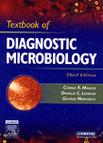诊断微生物学
2006-9
Elsevier Science Health Science div
Mahon, Connie (EDT)/ Lehman, Donald C. (EDT)/ Manuselis, George (EDT)
1211
Completely updated and in full color, this 3rd edition covers all the essentials of diagnostic microbiology. A logical building-block approach supplies what students need to know in an easy-to-use, memorable format. Material is presented in a progressive manner, from basic principles and concepts to systematic identification of etiologic agents of infectious diseases, promoting greater understanding and the development of problem-solving skills. Part I of the text explains basic principles and concepts, setting up a firm foundation in microbiology. Building on these basics, Part II highlights methods for the identification of significant isolates. Part III uses an organ system approach to discuss the laboratory diagnosis of infectious diseases with a focus on the most medically significant and commonly encountered diseases. More than 800 full-color illustrations. Hands-on procedures describe laboratory techniques. A case study begins each chapter with a related, real-life situation. All chapters make learning easier with features such as outlines, objectives, key terms, chapter summaries, points to remember, and learning assessment questions. Five new chapters: The Laboratory Role in Infection Control Biochemical Identification of Gram-Negative Bacteria Immunodiagnosis of Infectious Diseases Agents of Bioterror Biofilms: Architects of Disease Antimicrobial Susceptibility Testing chapter has been expanded to include emerging microbial resistance and pharmacokinetic and pharmacodynamic principles and applications. Issues to Consider encourages critical thinking and analysis of featured case studies.Glossary of terms serves as a quick reference. New co-editor, Don Lehman, brings years of educational experience.
PART Ⅰ INTRODUCTION TO CLINICAL MICROBIOLOGY 1 Bacterial Cell StructurePhysiologyMetabolismand Genetics Significance Overview of the Microbial World Classification/Taxonomy Comparison of Eukaryotic and Prokaryotic Cell Structure Bacterial Morphology Microbial Growth and Nutrition Bacterial Biochemistry and Metabolism Bacterial Genetics 2 Host-Pathogen Interaction A. The Role of the Usual Microbial Flora Origin of Microbial Flora Composition of the Microbial Flora at Different Body Sites Role of the Microbial Flora in the Pathogenesis of Infectious Disease Role of the Microbial Flora in the Host Defense against Infectious Disease B. Pathogenesis of Infection Microbial Factors Contributing to Pathogenesis and Virulence Host Resistance Factors Mechanisms by which Microbes May Overcome the Host Defenses Routes of Transmission 3 The Laboratory Role in Infection Control General Concepts in Infection Control Practice Outbreak Investigation Education Emerging and Reemerging Pathogens 4 Control of Microorganisms A. Disinfection and Sterilization Sterilization versus Disinfection Factors That Influence the Degree of Killing Methods of Disinfection and Sterilization Disinfectants versus Antiseptics EPA Regulations on Chemical Surface Disinfectants FDA Regulations on Chemical Skin Antiseptics B. Microbiology Safety General Microbiology Safety Bioterrorism and the Clinical Microbiology Laboratory 5 Performance improvement in the Microbiology Laboratory A. Quality Issues in Clinical Microbiology General Guidelines for Establishing Quality Control Performance Improvement B. Putting the Laboratory Test to the Test Analytical Analysis of Tests Clinical Analysis of Tests Operational Analysis of Tests Choosing a Laboratory Method Test Validation 6 Specimen Collection and Processing Basic Principles of Specimen Collection PreservationStorageand Transport of Specimens Specimen Receipt and Processing Culture Workup Nonroutine Specimens Communication of Laboratory Findings 7 Microscopic Examination of Infected Materials Preparation of Samples Stains Microscopes Terminology for Direct Examinations Examination of Prepared Material Grading or Classifying Materials Reports of Direct Examinations Examples of Sample Observations and Reports Quality Control in Direct Microscopic Interpretations 8 Use of Colonial Morphology for the Presumptive Identification of Microorganisms Importance of Colonial Morphology as a Diagnostic Tool Initial Observation and Interpretation of Cultures Gross Colony Characteristics Used to Differentiate and Presumptively Identify Microorganisms Colonies with Multiple Characteristics Growth of Organisms in Liquid Media ……PART Ⅱ LABORATORY IDENTIFICATION OF SIGNIFICANT ISOLATESPART Ⅲ LABORATORY OIAGNOSIS OF INFECTIOUS: AN ORGAN SYSTEM APPROACHAPPENDIXES

本书印刷质量好,插图多,有参考价值。